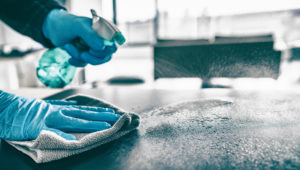Disposing of biohazardous waste
Any employees working in a role with occupational exposure risk thanks to biohazard waste should receive immediate and yearly training on the safe disposal of materials.
Communicating biohazardous materials
Warning labels should be added to all containers or bags with regulated waste, and all waste must have appropriate disposal processes.

All of the following is considered regulated waste:
- Contaminated items or materials at risk of releasing liquid or semi-liquid blood or OPIM in compressed
- Sharps that have been used
- Blood and OPIM in liquid or semi-liquid form
- Items with dried OPIM and blood that could be released through compression or damage
- Pathological and microbiological waste with OPIM or blood
Containers should be dated, signed, and labeled once decontaminated to indicate they pose no risk. These bags should not be biohazard colors or include biohazard labels. Custodians and housekeepers cannot dispose of any regulated waste listed above unless labeled as non-hazardous, and they should be instructed as such unless marketing and labeling are present.
If waste has been autoclaved or decontaminated, it can then be disposed of in a regular dumpster using standard trash bags. For autoclaved items, unlabelled autoclave bags may be used. However, any bag labeled as a biohazard cannot be disposed of in the correct manner.
Regulated waste that cannot be autoclaved or decontaminated must be disposed of in labeled containers or red biohazard bags. Any sharps must be in a puncture-proof container. All items must to removed to a specific collection site for correct disposal, in line with your exposure control plan for bloodborne pathogens.

